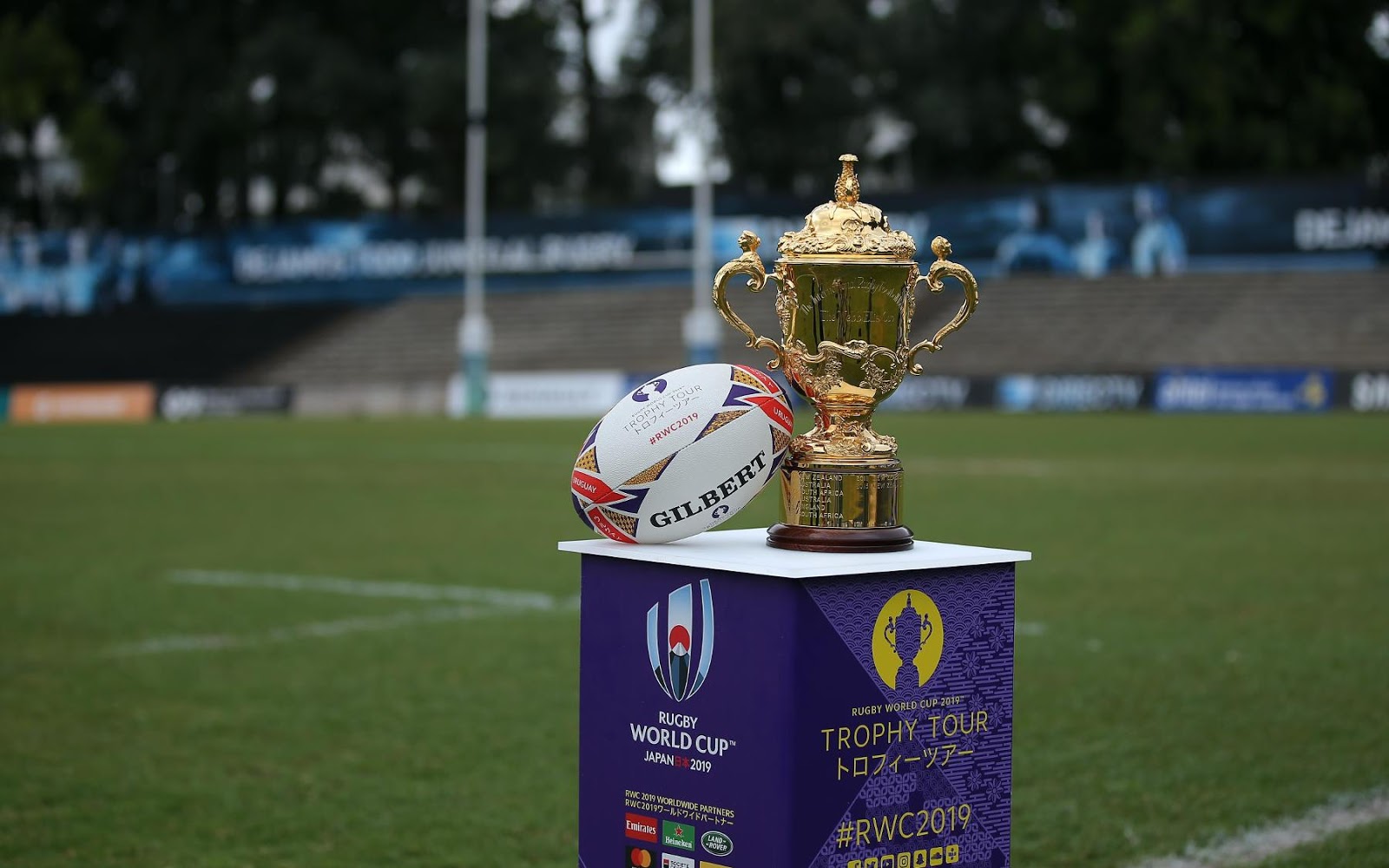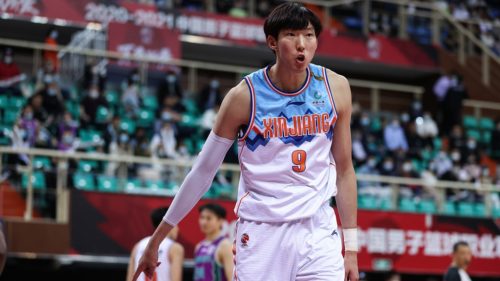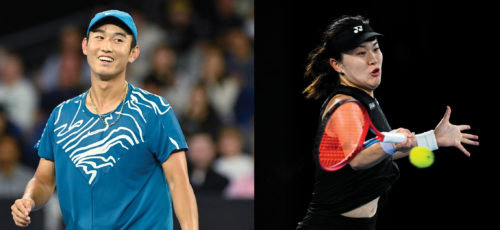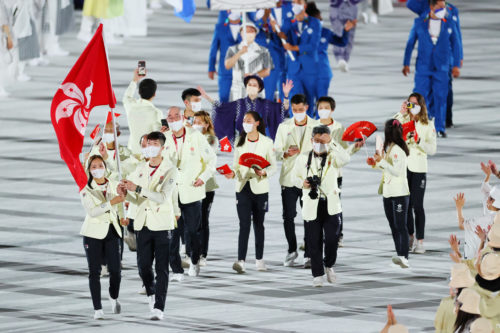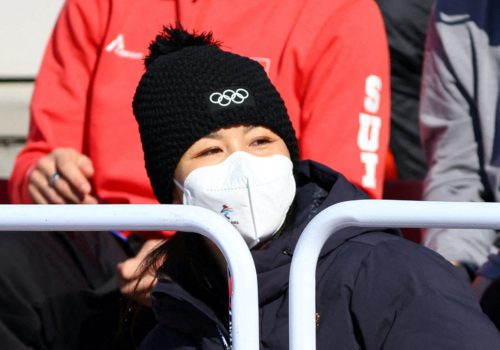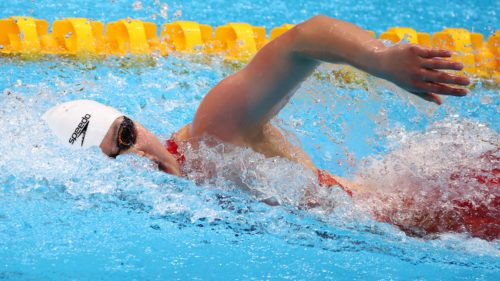Chinese interest in domestic hockey at all-time high
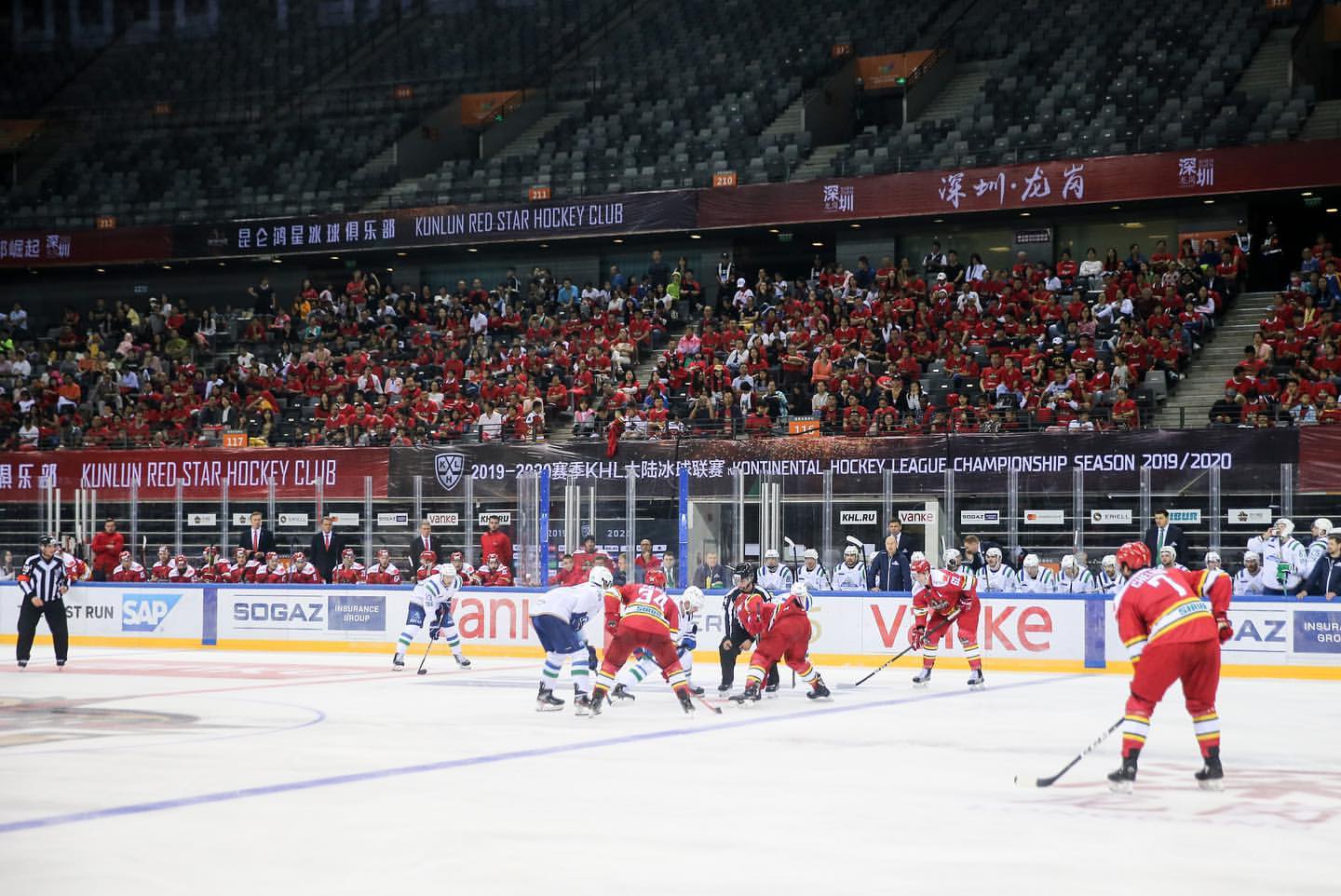
The China Sports Column is a The China Project weekly feature in which China Sports Insider Mark Dreyer looks at the week that was in the China sports world.
The mascots for the 2022 Olympic Winter Games and Paralympic Winter Games have been released, and, well, the jury is out.
The Olympic one will undoubtedly get more coverage given the more prestigious nature of the tournament, which is unfortunate, because it’s the weaker of the two designs.
A panda — hardly the most original idea — has been given a helmet, which apparently transforms it into a snow and ice star. And if you think that the helmet means more astronaut than athlete, they’ve got that covered, too — because it’s a nod to the future.
The psychedelic rings around the neck? That’s supposed to be a state-of-the-art ice rink, enabled by 5G technology.
Meanwhile, the Paralympics get a cool little red lantern guy, who represents harvest, celebration, warmth, and light — all with a Temple of Heaven on top!
Bing Dwen Dwen (冰墩墩 bīng dūn dūn) will rep the Olympics, while Shuey Rhon Rhon (雪容融, xuě róng róng) will be the Paralympic counterpart, and while the names are clearly designed to be easier for a foreign audience to pronounce, the bastardization of the pinyin simultaneously makes them sound nothing like their Chinese names and appear more Welsh than Chinese.
The 2008 Fuwa — you remember, these guys:
— were designed by well-known Chinese artist Hán Měilín 韩美林, and the 82-year-old is probably turning in his rocking chair.
I know, I know, it’s easy to rip on mascots — poor, defenseless creatures who probably had to satisfy about 816 design criteria all at once, so let’s stop there. (Also, my editor thinks I’m a monster.) [Editor’s note: Yes.]
With the Opening Ceremony for the Olympics on February 4, 2022, the Games are now only a little more than two years away, and many of the final preparations will be put into action and tested this winter.
The high-speed rail link to Chongli is due to open soon — possibly before the end of the year if schedules go to plan (and they usually do) — so let’s start dreaming about downhill slopes 30 minutes away from Beijing and China’s quest for hockey competence.
~
Speaking of hockey, the top men’s and women’s professional teams in China are currently based in Shenzhen this season, meaning that their journeys to various destinations in their respective Russian leagues will take even longer than usual.
But the hockey itself is gaining some traction with the locals.
Kunlun Red Star has set four attendance records since the start of the season.
A regular season record 6,200 people saw the game against Barys, before a new franchise record of 7,716 saw the game against Traktor (beating the 7,100 who watched Red Star’s playoff win against Metallurg in Beijing). But that was beaten just one day later, as 8,115 went to the Universiade Sports Complex in Shenzhen to see a 2-1 win.
That’s way up on last season’s average of 2,507, and above the league-wide average of 6,121. The team’s attendance figure would rank sixth in the 25-team league based on last year’s averages.
Meanwhile, the women’s team, the KRS Vanke Rays, set a record attendance for a Russian Women’s Hockey League game when 3,432 fans saw them take on Biryusa Krasnoyarsk. The visitors won 2-0 to join the early leaders on the first weekend of WHL action.
Unfortunately, not too many of the games for either team have been going the way of the Chinese, but it’s encouraging that more people are showing up to watch them.
And in a seamless transition to another warm-weather hockey haven, the Dallas Stars have linked up with the Shougang Eagles Hockey Club in Beijing, under which amateur coaching staff from the Stars will train players in Beijing, while the Eagles will also get to travel to Dallas to hone their skills there.
The Stars have taken this opportunity to launch a Weibo account, becoming the fifth NHL club to do so, and looking to emulate the success on Chinese social media of their arena mates, the NBA’s Dallas Mavericks.
~
The Rugby World Cup has kicked off across the water in Japan, with World Rugby claiming that its “Impact Beyond” legacy program has already seen 1.8 million new rugby participants in Asia since 2016.
The growth figure for China — whose team did not qualify for the World Cup — is not known, with, perhaps understandably, more than 1 million of the alleged 1.8 million new participants coming from Japan, and another 139,000 apparently having emerged in Hong Kong since the last World Cup in 2015.
But regular readers will know that this column takes statistics of this sort with a healthy dose of skepticism, and World Rugby, in particular, has previous form when it comes to shamelessly inflating the numbers.
Remember when World Rugby claimed 33 million rugby fans in China? You don’t even need to read the source or the study to know that it’s nonsense, though that didn’t stop World Rugby CEO Brett Gosper from passionately defending the number on Twitter.
That’s not to say that rugby is nowhere in China.
In April this year, Chen Yingbiao was elected as the new president of the Chinese Rugby Football Association (CRFA) and — unlike many of his predecessors — he actually has a rugby background through his athletic association with the People’s Liberation Army (PLA). Chen’s PLA squad actually defeated its British counterparts in Hong Kong back in 1996, one year before China became an International Rugby Board member and began playing international fixtures.
Chen’s short reign at the CRFA has been punchy: In his opening statement he said he would resign if the Chinese women’s sevens team did not qualify for the Tokyo Olympics. That essentially means China will have to win the Asian qualifying tournament in Guangzhou in six weeks’ time, or else face a last-ditch 12-team qualifying tournament in France next June, with some of the world’s best teams competing for just two spots.
The women’s team has had some successes, though it did not qualify for the Rio Olympics in 2016, making Chen’s pledge that much bolder. The last podium finish for the men’s team in any international tournament was the 2006 Asian Games in Doha.
The sport’s 10-year development plan has the following three objectives:
- The women’s sevens team should be a top six side in the world within 10 years.
- The men’s sevens team should qualify for the 2024 Olympics.
- In 15s, both men and women should qualify for the World Cup in six to eight years.
Those are all solid, ambitious goals, though as the Chinese Football Association has shown, it’s one thing to outline lofty goals, and quite another thing to achieve them.
After all, the Chinese men’s team is currently ranked 80th in the world out of 105 countries that play the sport — in other words, they are light years away from qualifying for the World Cup anytime soon.
~
Also this week:
The PGA Tour Series-China will switch to a points-based scoring system, rather than a yuan-denominated money order, to ring it into line with the other series.
Guus Hiddink steps down from his position as head coach of the U21 Chinese soccer team, but remains on the books at the CFA.
Brazilian soccer player Alan Carvalho looks set to be the next player naturalized by China after reports say he has given up his passport.
A misspelt banner at last weekend’s FIBA Basketball World Cup final in Beijing (in which Spain beat Argentina 95-75) went viral and even made headlines back home in Serbia.
Note to Serbian fan Jovan, who was also there: if, in your marriage proposal to Agnes, you spell the *first* word wrong, just start again. #FIBAWC #FIBAWorldCup #FIBAWorldCup2019 pic.twitter.com/xfngvuZNlf
— Mark Dreyer (@DreyerChina) September 16, 2019
Highlight of the Week:
This week’s video highlight comes from the often bizarre world of Chinese soccer. Two weeks ago, national team coach Marcello Lippi was rubbing cake in the face of reserve goalkeeper Zhang Lu at Zhang’s birthday party. This week, Zhang is behind bars after being caught driving with a massive blood alcohol level of 0.253 percent.
Aftermath of Zhang Lu's drunken driving: (1) as a national team goalkeeper, he is suspended from 'all CFA football activities' (2) as captain of Tianjin Tianhai, he is suspended from work without pay. 2 weeks ago Marcello Lippi poked fun at him in his 32-year-old birthday party. pic.twitter.com/SIUklsSd92
— Titan Sports (@titan_plus) September 21, 2019
The China Sports Column runs every week on The China Project. Follow Mark Dreyer @DreyerChina.



